Art Fairs
See 6 Highlights From TEFAF New York, From a Lalanne Grasshopper Bar to a Seafaring Pair of Wyeth Murals
The tony New York edition of Europe's top fair for historical masterpieces arrives at the Park Avenue Armory.
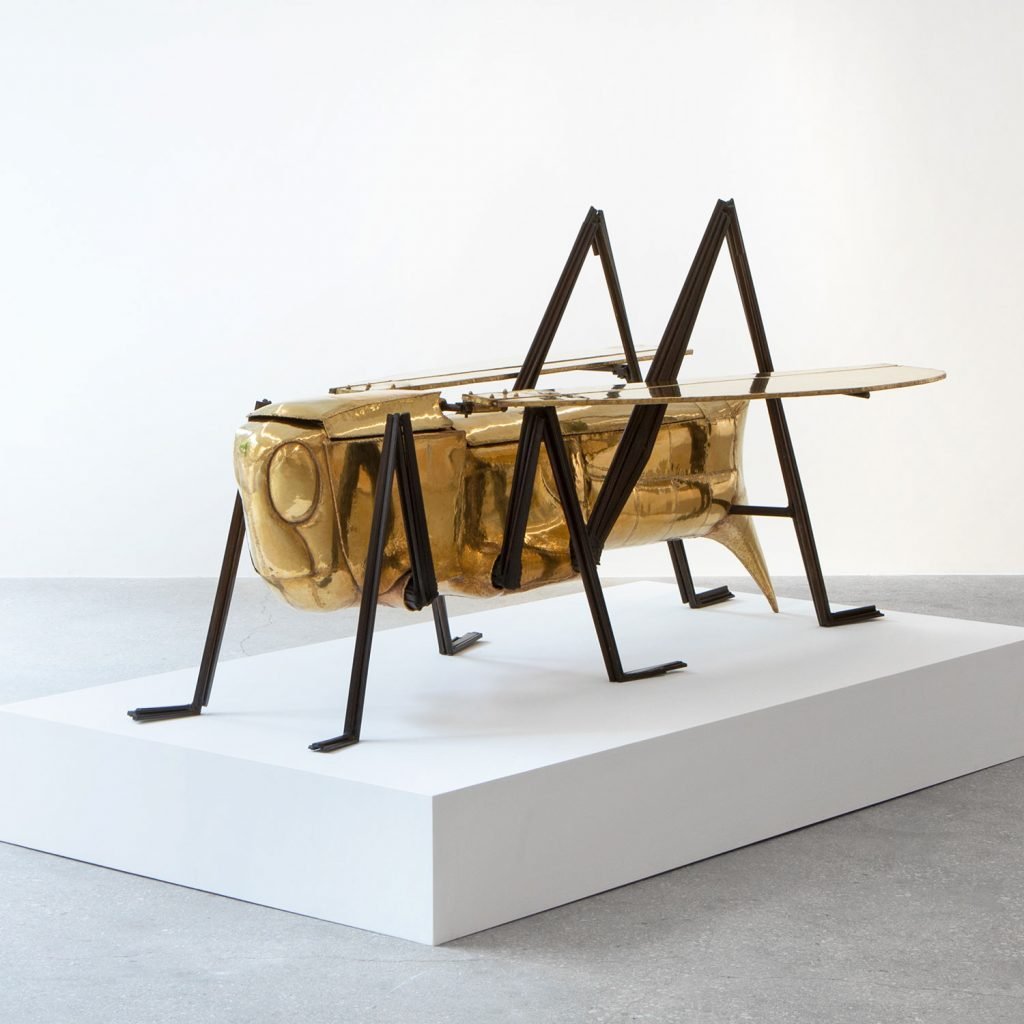
The tony New York edition of Europe's top fair for historical masterpieces arrives at the Park Avenue Armory.

Lee Carter

Following its showcase in the Dutch city of Maastricht in March, the European Fine Art Foundation (TEFAF) is currently hosting its New York edition (May 12–16) in the suitably vast Park Avenue Armory. The annual fair—a must for New York collectors—brings together Modern and contemporary art, jewelry, antiques, furniture, and design.
The 2023 lineup sees 78 returning dealers representing 13 countries, plus 13 new-to-the-fold exhibitors. Newcomers include New York’s Karma, Paris’s Galerie Chastel-Maréchal, Washington D.C.’s Geoffrey Diner, and South Korea’s PKM Gallery. The roster unites an exceptional selection of works in New York, offering collectors, design professionals, curators, and enthusiasts the opportunity to view and own a wide range of museum-quality pieces vetted by expert committee.
Early sales reports suggest significant interest in women artists. Fair organizers said Di Donna Galleries sold multiple works from its solo presentation of Meret Oppenheim, including a sculpture to a major American institution; Almine Rech sold two works by Chloe Wise ($40,000–$55,000); White Cube sold works by Marlene Dumas and two Tracey Emin paintings; Hazlitt Holland-Hibbert sold two works on paper by Bridget Riley ($200,000 each); Galleria Continua sold Empath 026 by Kiki Smith; and LGDR sold three works by Lynne Drexler.
Here are a few other highlights.
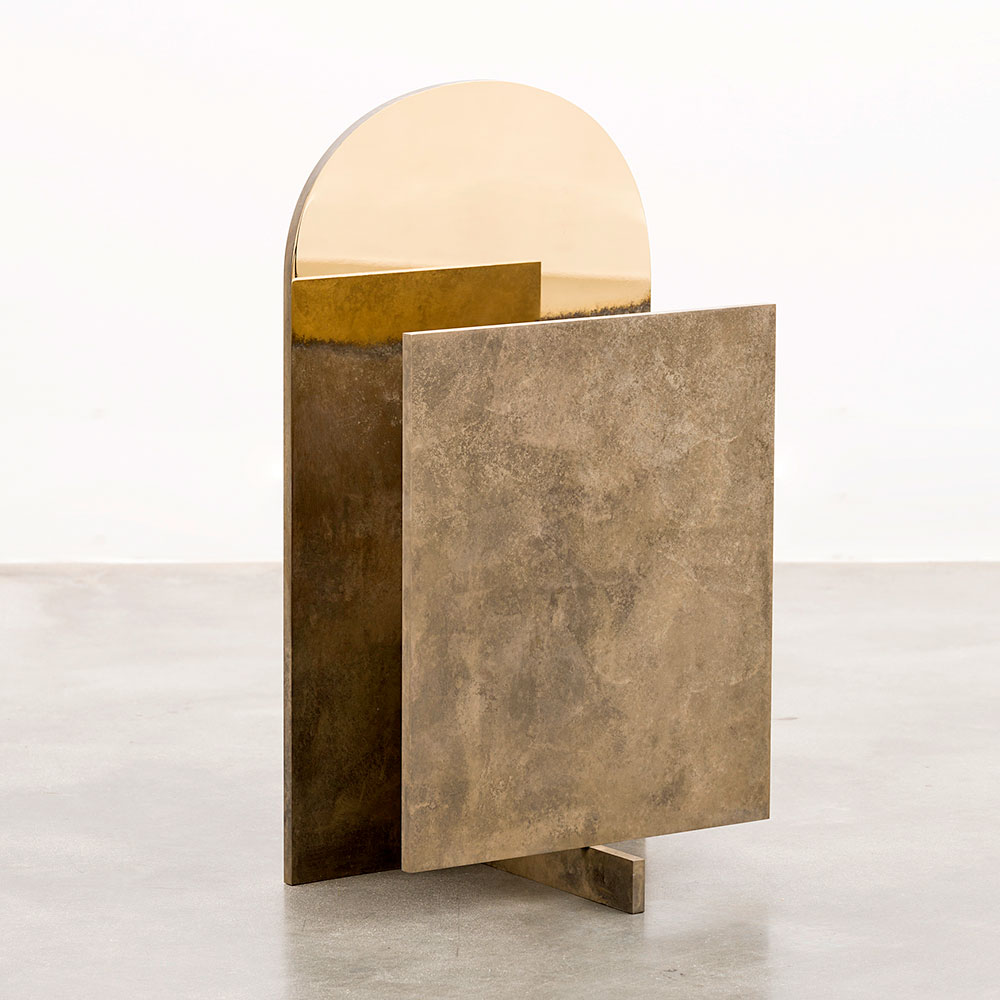
Isamu Noguchi, Linga (1987–88). Muntz metal. Courtesy of White Cube.
Isamu Noguchi created his polished metal sculpture Linga in 1987. In Indian and Hindu traditions, the linga is a phallic symbol, a stylized abstraction representing Shiva’s cosmic generative force—and is often used as a non-representational cult image in temples. Noguchi’s modern take on the linga alludes to the tradition of combining the masculine and the feminine, yet he presents the two planes not as sculpture and base, but as an upright couple—a single sacred vessel for the divine. Noguchi was inspired not only by Eastern heritage, but also by his earlier years, in the 1920s, working as an assistant in Constantin Brancusi’s studio in Paris, where “he was primarily in charge of polishing,” according to White Cube’s senior director, Matthieu Paris. Hence Noguchi’s burnished, high-sheen Linga.
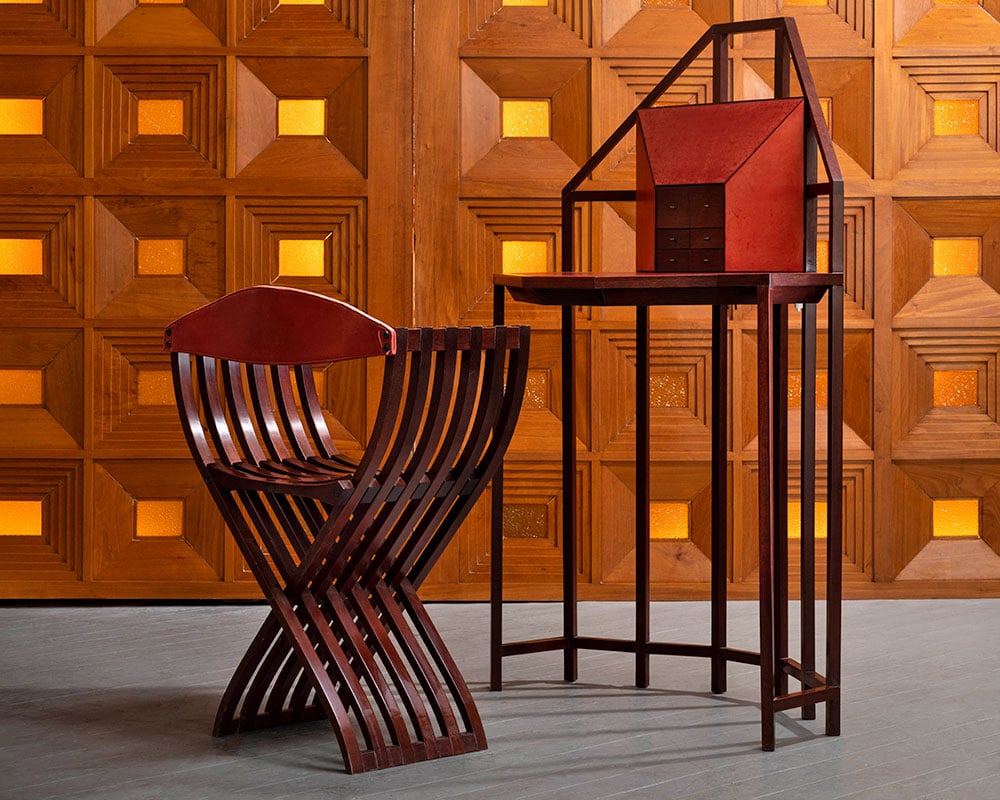
Pierre Paulin, Bonheur-du-jour desk and Curule chair (1983). Mahogany and leather. Courtesy of R & Company.
This writing desk and accompanying Greek-style chair—stained in dark hues associated with men’s furniture, though crafted in a smaller form intended for a woman’s use—were part of a suite designed by Pierre Paulin in 1983. The style celebrated the traditions of the French court and the 18th-century marchands-merciers who supplied its furniture. When open, the shutters of the small central box on the desk match up perfectly with the grid structure of the backsplash, creating an elegant and symmetrical composition while protecting the privacy of the person writing. The pair were formerly owned by Dennis Freedman.
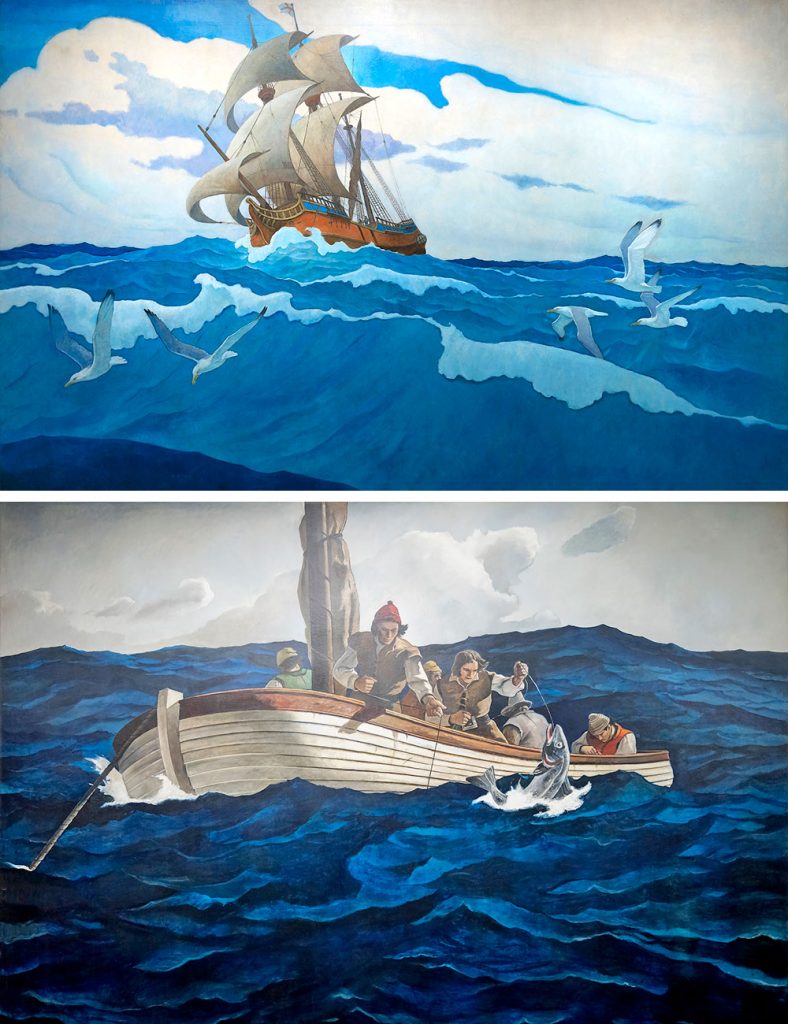
Top: N. C. Wyeth, The Coming of the Mayflower in 1620 (1941). Bottom: Andrew Wyeth & N. C. Wyeth, Puritan Cod Fishers (1947). Courtesy of Bernard Goldberg Fine Arts.
In 1940, N. C. Wyeth was commissioned by the Metropolitan Life Insurance Company to paint a group of murals for its New York Headquarters at One Madison Avenue known as “The New England Series.” Nineteen murals were conceived to bring the world of the Pilgrims to life, providing MetLife’s employees with stirring seafaring imagery. The Coming of the Mayflower in 1620 is one of the last works Wyeth himself created before his death in 1945. Guided by his sketches, five other panels—including Puritan Cod Fishers—were completed by his son, Andrew, and his son-in-law, John McCoy, both students of his. The gallery’s asking price for Mayflower is $4.25 million and, for Cod Fishers, $3.75 million.
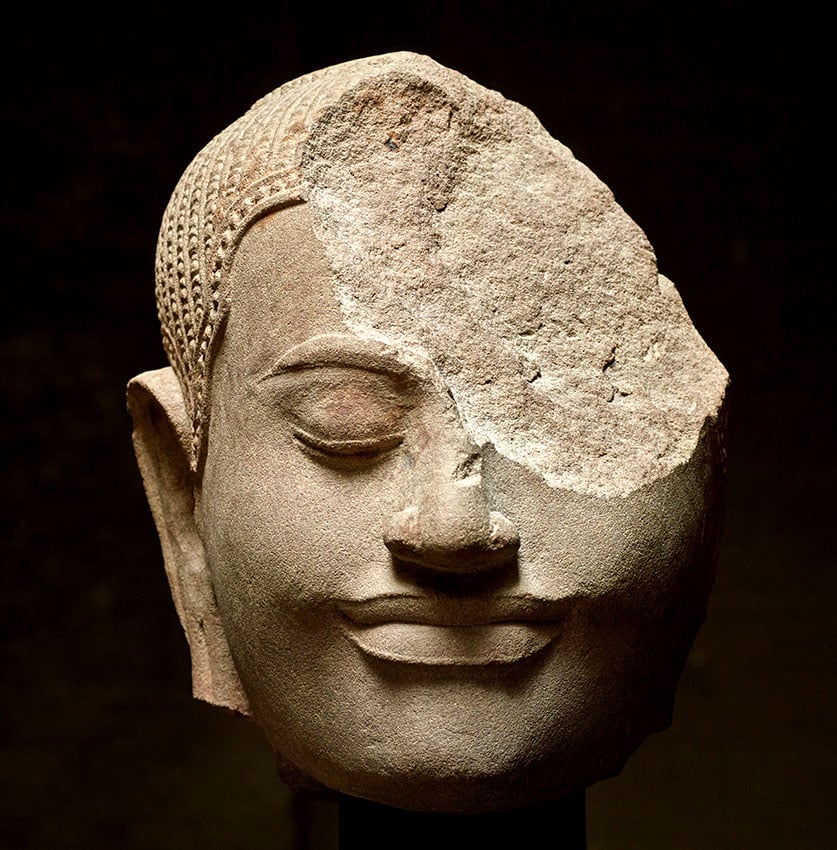
Head of a deity, late 12th century–early 13th century, Cambodia. Courtesy of Axel Vervoordt.
Axel Vervoordt has brought an exceptional Khmer sculpture, a fragment of a male head showing the facial features of King Jayavarman VII, who reigned from 1181 to 1218, and who was arguably the most important of the Khmer monarchs in what is now Cambodia. He was the first Khmer ruler to devote himself to Buddhism, thus the head bears qualities of Buddha as well. Made of very fine sandstone in the Bayon sculptural type, the fragment captures an emotion that other works of Khmer art from earlier periods do not. The naturalistic face shows signs of maturity, namely in the high forehead and thick eyebrows. The serene expression is amplified by the eye, closed in meditation to convey introspection and tranquility.
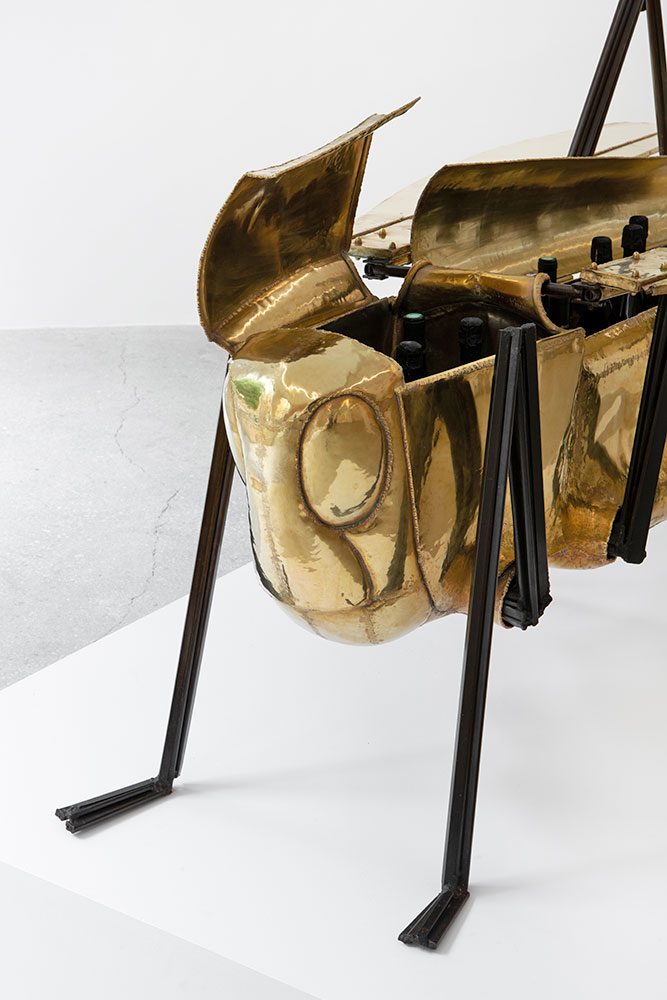
François-Xavier Lalanne, Sauterelle Bar (ca. 1974). Courtesy of Mennour.
François-Xavier Lalanne’s Sauterelle Bar is part of a series of functional animal sculptures he initiated in 1964, which would eventually comprise versions of a bull, a donkey, an ostrich, and a cat. This grasshopper in steel and polished brass is as much a decorative statue as an oversized wet bar, with its wings that open to reveal a bar with storage space for liquor and glasses. The highly inventive work comes directly from the private collection for which it was created, here revealed to the public for the first time since its making. Only two other Sauterelles are known to exist, both featuring Sèvres white porcelain—one is in the collection of the late Queen Elizabeth II (a gift from French president Georges Pompidou, namesake of the Pompidou Centre) and currently on display at Buckingham Palace, while the other is in a private collection. A patinated bronze hippopotamus bar sold for $7.8 million at Christie’s New York on May 11.

Anonymous Haida artist, Pair of Lions (ca. 1840). Courtesy of Donald Ellis Gallery.
TEFAF is a redoubt of one-of-a-kind items, and these wooden lions are no exception. Carvers belonging to the Haida people of the Pacific Northwest occasionally crafted items that were not native to North America—as in the case of a matching pair of carved African lions in red spruce or cedar with iron nails, dating from around 1840. “We don’t know for certain why these lions were carved,” said gallery owner Donald Ellis. “If I were to speculate, I’d say they were commissioned by the senior factor at the Hudson Bay Company for use in his home, since carved stone lions were popular in the gardens of his native England.” The lions were most likely realized from a very early photograph or book illustration, in a way that combined 19th-century European naturalism with traditional Northwest Coast-style features. The noses, whiskers, manes, and tufted tail tips are naturalistic, while the eyes, eyebrows, and mouth point to a Northwest Coast origin. In addition, the faces appear to be masks, revealed in a curved line from forehead to nose to chin, further suggesting a northern coastal origin. The asking price for these unusual lions is $650,000.